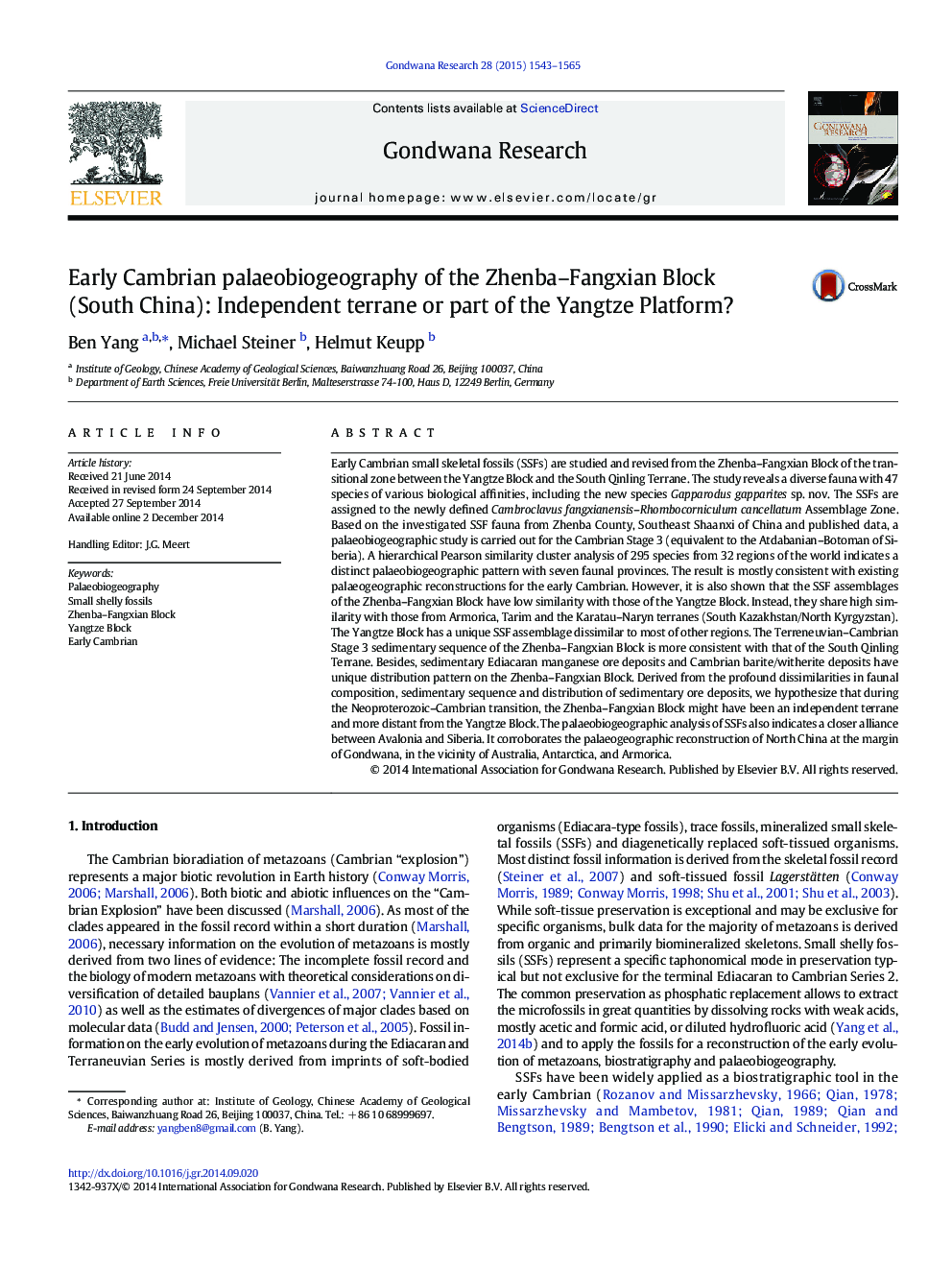| کد مقاله | کد نشریه | سال انتشار | مقاله انگلیسی | نسخه تمام متن |
|---|---|---|---|---|
| 4726707 | 1356343 | 2015 | 23 صفحه PDF | دانلود رایگان |

• The Zhenba–Fangxian Block might not be part of the Yangtze Platform.
• Palaeobiogeography of the Cambrian Stage 3 SSFs proposed 7 global bioprovinces.
• The SSF zonation in the Zhenba–Fangxian Region is redefined.
Early Cambrian small skeletal fossils (SSFs) are studied and revised from the Zhenba–Fangxian Block of the transitional zone between the Yangtze Block and the South Qinling Terrane. The study reveals a diverse fauna with 47 species of various biological affinities, including the new species Gapparodus gapparites sp. nov. The SSFs are assigned to the newly defined Cambroclavus fangxianensis–Rhombocorniculum cancellatum Assemblage Zone. Based on the investigated SSF fauna from Zhenba County, Southeast Shaanxi of China and published data, a palaeobiogeographic study is carried out for the Cambrian Stage 3 (equivalent to the Atdabanian–Botoman of Siberia). A hierarchical Pearson similarity cluster analysis of 295 species from 32 regions of the world indicates a distinct palaeobiogeographic pattern with seven faunal provinces. The result is mostly consistent with existing palaeogeographic reconstructions for the early Cambrian. However, it is also shown that the SSF assemblages of the Zhenba–Fangxian Block have low similarity with those of the Yangtze Block. Instead, they share high similarity with those from Armorica, Tarim and the Karatau–Naryn terranes (South Kazakhstan/North Kyrgyzstan). The Yangtze Block has a unique SSF assemblage dissimilar to most of other regions. The Terreneuvian–Cambrian Stage 3 sedimentary sequence of the Zhenba–Fangxian Block is more consistent with that of the South Qinling Terrane. Besides, sedimentary Ediacaran manganese ore deposits and Cambrian barite/witherite deposits have unique distribution pattern on the Zhenba–Fangxian Block. Derived from the profound dissimilarities in faunal composition, sedimentary sequence and distribution of sedimentary ore deposits, we hypothesize that during the Neoproterozoic–Cambrian transition, the Zhenba–Fangxian Block might have been an independent terrane and more distant from the Yangtze Block. The palaeobiogeographic analysis of SSFs also indicates a closer alliance between Avalonia and Siberia. It corroborates the palaeogeographic reconstruction of North China at the margin of Gondwana, in the vicinity of Australia, Antarctica, and Armorica.
Figure optionsDownload as PowerPoint slide
Journal: Gondwana Research - Volume 28, Issue 4, December 2015, Pages 1543–1565